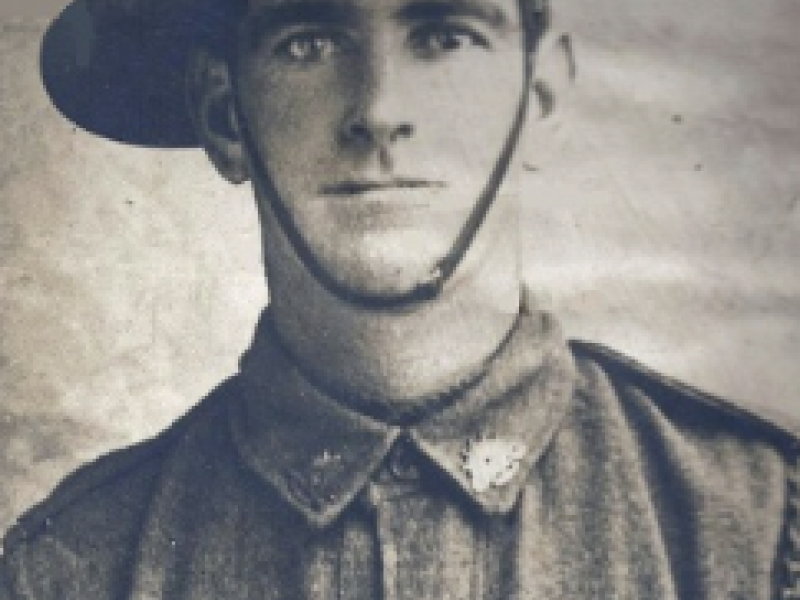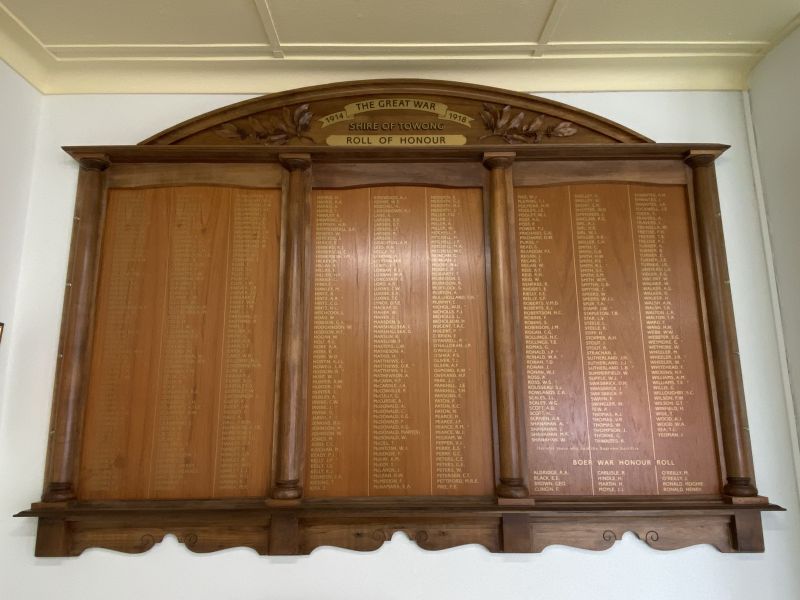Patrick (Paddy) James O'Farrell
Paddy was born on the 1886 at Tallangatta, Victoria. He was one of six children of James and Margaret (née Shanahan) O’Farrell. His family owned 340 acres and were active participants in the running of the Noorongong State School.
On the 27th of January, 1916, Paddy underwent his medical examination in Tallangatta. Despite the missing the third finger on his left hand, he was passed as medically fit. Paddy was a single, 29 year-old farmer upon enlisting. He was allocated the Regimental Number 967 and placed in C Company of the 37th Infantry Battalion. He took his oath of service at Tallanagatta on the 22nd of February.
Paddy completed his initial training at Seymour. On the 25th of March he was given a 58 hour leave pass. He was 24 hours late arriving back and was charged with having been absent without leave. He was let off with a warning. In early June of 1916 the battalion embarked on HMAT A34 Persic at Melbourne.
At dawn on the 28th of June the Persic steamed slowly into Table Bay at Cape Town. Although initially not allowed ashore for free leave due to a number of meningitis on board, the Cape Town officials conceded and allowed them to conduct regulated parades and route marches. The Persic weighed anchor on the 30th and proceeded to its next port of call at St Vincent at the Cape Verde island group. On the 16th of July the troops aboard heard the long, continuous blast of the ship’s siren, the signal denoting a submarine attack. The troops responded quickly and moved to their appointed boats, quietly awaiting the explosion of a torpedo. Fortunately it turned out to be a rigorous drill. The Perisc arrived at Plymouth, England on the 25th of July.
The battalion entrained at Devenport and arrived at their new home at No. 5 Camp, Larkhill on Salisbury Plain. Two months later Paddy was admitted to the Fargo Military Hospital at at Larkhill with influenza. Two weeks later he marched in to No. 1 Command Depot at Perham Downs (often referred to as “Perishing Downs” by troops stationed there). On the 22nd of November the battalion were transported across the English Channel to France. Within a week they had begun to occupy the trenches on the Western Front near Armentieres. The winter of 1916-17 was one of the coldest in history with an average daytime temperature of around 2oC.
Paddy was admitted to the 7th General Hospital at St Omer in early Decemeber having developed a case of the mumps. He would rejoin his battalion in the field on Christmas Eve.
In February of 1917 the battalion was in the front line near La Chapelle d’Armentieres (see image below). At 0550 hours on the 23rd, the Germans layed down a barrage on the Australian trenches, using their heavy minenwerfer or trench mortars. Battalion records state that, although there were six casualties as a result of the barrage, there were no deaths. Paddy is listed as having been killed in action on the 24th of January, although the War Diarist wrote that there were no casualties on the day. It must be assumed that Paddy was one of the ORs (other ranks) wounded on the 23rd and then succumbed to his wounds the following day.
Paddy was buried in the Cite Bonjean Military Cemetery at Armentieres, France. He is also remembered at the Australian War Memorial Roll of Honour, the Fernvale Hall Honour Roll, the Noorongong Honour Roll, the Noorongong School site and the Towong Shire Boer War and WW1 Roll of Honour at Tallangatta, Victoria. For his service he was awarded the British War medal and the Victory Medal.

 Stephen Learmonth
Stephen Learmonth